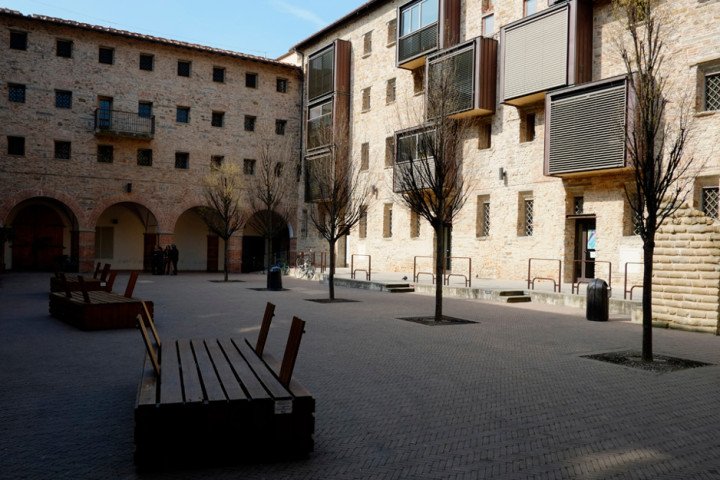LE MURATE.
INTERVENTI DI RESTAURO URBANO. Completamento lotto terzo - URBAN RESTORATION INTERVENTIONS. Completing third lotto.

Bisogna sempre ricordare che fare architettura significa costruire edifici per la gente, università, musei, scuole, sale per concerti: sono tutti luoghi che diventano avamposti contro l'imbarbarimento. Sono luoghi per stare assieme, sono luoghi di cultura, di arte e l'arte ha sempre acceso una piccola luce negli occhi di chi la frequenta.
Renzo Piano
L’area di intervento è una limitata porzione del complesso delle Murate non ancora completata ma vicina al PAC (progetto arte contemporanea), struttura molto attiva nella promozione di tutte le forme di contemporaneità e di espressione artistica.
The intervention area is a limited portion of the Murate complex not yet completed but close to the PAC (Contemporary Art Project) a very active structure in the promotion of all forms of contemporaneity and artistic expression.
Valore del’intervento: € 240.000
Value of the intervention: € 240.000
Durata dei lavori: 180 gg
Duration of works: 180 days
Tipologia Intervento: recupero di una porzione al piano terra come espansione del PAC, struttura già attiva che promuove giovani artisti e forme d’arte contemporanea. Gli spazi sono ristrutturati al grezzo quindi l’intervento prevede la loro finitura e la realizzazione dei necessari impianti tecnici.
Type of intervention: Restructuring of a portion on the ground floor as an expansion of the PAC. An already active structure that promotes young artists and contemporary art forms. The spaces have been renovated but are unfinished; therefore the intervention includes their finishing and the realization of the necessary technical systems.
Attrattività: Si trova in prossimità dei viali di circonvallazione, sul limitare dell’area pedonale, vicino Piazza Beccaria in cui confluiscono 3 viali; nelle immediate vicinanze dei Lungarni, linea di accesso privilegiata a Ponte Vecchio ed al centro storico.
Attractiveness: It is located near the avenues of the ring road, on the edge of the pedestrian area, near Piazza Beccaria where 3 avenues meet; it is very close to the Lungarni, a privileged access line to Ponte Vecchio and to the historical center.
Notizie storico-artistiche: la formazione del complesso così detto delle Murate risale al 1424, data in cui suor Apollonia e le sue Sorelle si trasferiscono dalle pile di ponte Rubaconte ad una casa in via Ghibellina nel quartiere di Santa Croce. La fase conventuale prosegue sino alla trasformazione in carcere, operata dall’architetto Domenico Giraldi nella seconda metà dell’Ottocento. La terza fase della vita delle Murate inizia con la chiusura del carcere nel 1983, per arrivare poi all’anno 2000, data di inizio dei lavori di recupero dopo l’approvazione nel 1998 del Progetto Unitario di recupero che ha destinato i volumi del carcere a funzioni diversificate: negozi, spazi sociali, piazze e percorsi pedonali al piano terreno; uffici e residenze pubbliche ai piani superiori.
Historical and artistic information: The history of the so-called Murate complex dates back to 1424, when Sister Apollonia and her Sisters moved from the cells on the Rubaconte bridge to a house in Via Ghibellina in the Santa Croce district.
The convent was later transformed into a prison by the architect Domenico Giraldi in the second half of the nineteenth century. The third phase of the life of Le Murate begins with the closure of the prison in 1983. In the year 2000, the recovery works started after the approval in 1998 of the Unitary Recovery Project that allocated the prison volumes to diversified functions: shops, social spaces, squares and pedestrian paths on the ground floor; offices and public housing on the upper floor.
.
